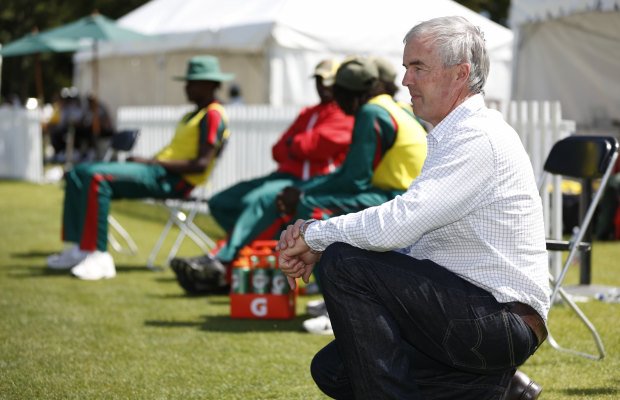Address
57 Riccarton Ave
Christchurch, Ōtautahi, 8011
New Zealand
Postal Address
PO Box 789
Christchurch, 8140
Office Hours
Monday - Friday
8.30am - 5pm

We are trying to talk about cricket at Hagley Park but all we can hear is the deafening beat of cicadas in the trees.
The sound is a signature of the game in Christchurch and is also the background to a fiercely contested push to lift the game in the city’s rebuild.

Canterbury Cricket chief executive Lee Germon would love Hagley to have farmers and agricultural business as its core.
Actually love is too mild. Call it need.
Germon’s country cricket associate Mike Satterthwaite is quietly putting his face to the cause, as a farmer, father of long-time White Ferns representative Amy and chairman of the Canterbury Country association.
Rural people will go a long way for their sport but Satterthwaite, the owner of Palmside near Culverden, also knows how badly cricket needs to have Canterbury agriculture behind it.
After all, he’s not at the park this day just to see Kenya play United Arab Emirates in a World Cup qualifier.
It’s the best part of a decade since the game in Canterbury has had a fully functioning home stadium.
The homelessness started long before the earthquakes, when rugby crowded cricket out of its summer spot at the old Lancaster Park.
The Canterbury Wizards and other representative teams muddled along on a picturesque oval beside QE2 Stadium, until that came to a crashing end in the 2010-11 earthquakes.
The former New Brighton racecourse was suddenly as useful for cricket as a border-dyke paddock.
The game’s administrators mulled over a handful of locations – including the Canterbury A&P Association grounds in the city’s southwest, but decided to grit their teeth and go for an international-standard venue at South Hagley.
Previous attempts to put permanent, man-made structures in Hagley Park had been howled down and the initial response was no different this time.
“There’s been primary and secondary school matches and juniors on Friday nights. That makes it quite unique in the country as well.”
Lee Germon, Canterbury Cricket
A vocal group of protesters rose when Canterbury Cricket Association touted renovations to its traditional spot near Christchurch Hospital.
To say debate was heated is the same as saying the city loves its cathedrals.
Germon had the most visible hand in steering the Hagley plan through an emotionally charged and expensive Environment Court hearing.
The former Black Caps captain argued cricket wasn’t taking over part of the park but instead was continuing a sporting tradition that began with the city fathers.
Now, Germon says, cricket has planning consents that will allow the community to watch matches in next year’s Cricket World Cup.
And the game has a base that could serve it well for the next century or more.
While it’s easy to regard the central-city ground as primarily being a magnet for urbanites, Germon and Satterthwaite predict the recipe for a people’s park will be more diverse, featuring plenty of farmers and their friends.
Canterbury Cricket says up to 10,000 of its player base hails from rural areas.
This catchment spreads from South Canterbury to West Coast and Buller and only a certain proportion will be farmers, but there is bound to be a lot of rural businesspeople in its midst. That’s Canterbury Cricket’s potential money-maker.
As might be the case for any sport, rural support creates fertile ground for an agricultural business to nurture clients.
While any promoter wants casual ticket sales and season memberships, Canterbury Cricket is like so many in cherishing the corporate host.
The dream is to get rural traders fixing tents on top of Hagley’s much-debated, partly built embankment to host clients.
Germon says rural businesses will be able to spend days up there, doing business in the name of sport.
He’s hoping to get rural Canterbury on board in time for Christchurch to host matches at the Cricket World Cup in the summer of 2015.
However, getting the place ready for the World Cup is only the start.
“What you see in October is basically what you’re going to get for the next 100 years – a grass bank all the way round a pavilion,” he said.
“We certainly don’t have any plans to increase the infrastructure and it’s going to be quite a unique ground in the sense that, as well as holding international cricket, it will hold club cricket.
“There’s been primary and secondary school matches and juniors on Friday nights. That makes it quite unique in the country as well.”
The Canterbury Country cricket final will also be played there next month.
That’s another connection between town and country, German says.